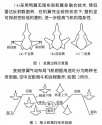Hello, Can anyone knows how PL-15 and Meteor stack against each other??? And whats the difference between Dual Pulse motor and Ram Jet engine???
I think PL-15 range isn't as great as Meteor's? Then again there isn't much accurate and reliable info on the PL-15 out there. Claims are 150km range or thereabouts. I personally don't know if and how ramjet is superior to rocket for applications on air to air missiles. Perhaps they do offer higher speed and greater range as evidenced by MBDA going with ramjet and the artworks suggesting PLAAF ramjet AAMs. Ramjet is a popular choice for Russian, Chinese, Indian, and Japanese anti-ship missiles though.
Dual pulse motors is what online posters are calling PL-15's capability of providing final stage boosts. Typically most AAMs have rockets that burn for under a minute when the missile is launched. After this point, the missile has nothing propelling it anymore and is carried by this acceleration and its momentum. It can trade some altitude (potential energy) for kinetic energy but it is going to struggle to hit a fast and maneuverable target at the edge of its declared range. The lower the kinetic energy of the missile, the far less likely it has a good chance of hitting its target. Therefore PL-15 uses some method maybe liquid fuel engines or multiple stages to provide it with more energy when it is closer to final interception stages. This also allows it to re-calculate optimal flight paths that maximise its kill probability. It of course also extends its declared range but at the edge of this range, it would also have lower chance of interception. Essentially it just provides the missile with greater kill probability at the same range compared to other missiles with lower range since its G limit should be more or less the same as modernised MRAAMs.
I would consider the PL-15 as a superior PL-12 is every aspect except for space and weight required to carry it. It's also much more expensive hence why PLAAF still uses the PL-12 as the main backbone MRAAM. Probably to be replaced to newer smaller variants of the PL-15 and other A2A means including new technologies, platforms, and doctrines. For now, PL-12 offers the best capability to price ratio for sure. For higher end opponents, there are superior but much more expensive weapons. PL-12 is still probably as good or better than what 70% of the world's airforces currently use.


